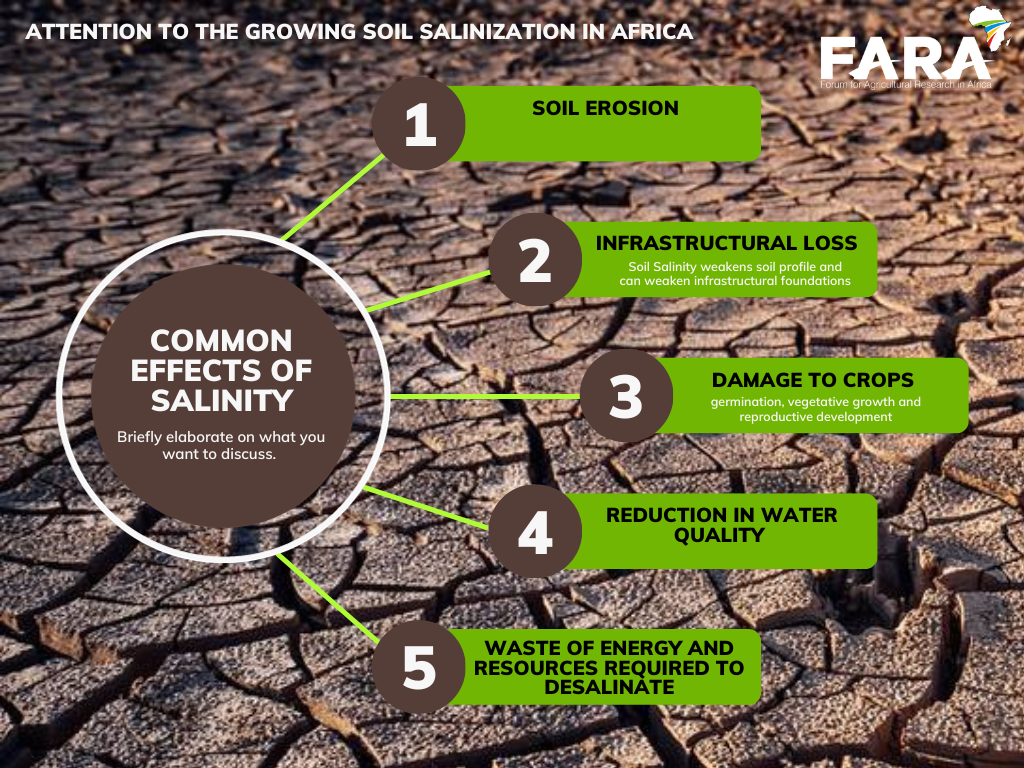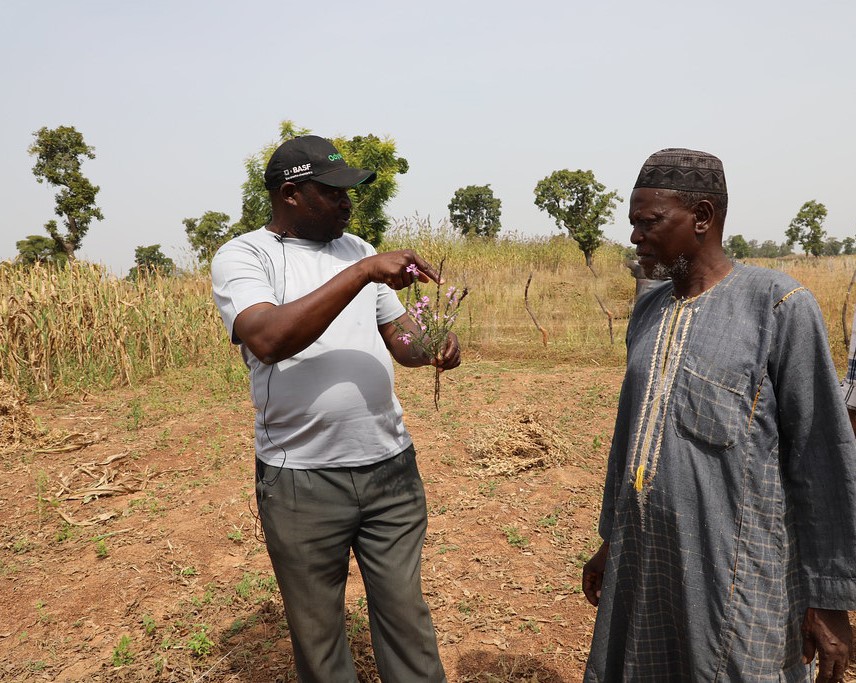|
Getting your Trinity Audio player ready...
|
“Halt soil salinization, boost soil productivity.”
One case of salt losing its sweetness in nature is in the salinization of the soil, a growing concern in Africa. This is becoming a reality in Africa where the proportion of soil with high salt content is gradually approaching a critical threshold that requires considerable effort.
Africa is reported to possess 60% of the remaining arable land globally. Arable land implies a land lot with complementary properties suitable for crop cultivation and livestock rearing. A key property of any arable land is healthy soil, containing adequate levels of essential crop nutrients, water, air, and a thriving microbial population essential for crop production.
The core determinant of soil functionality lies in its nutrient-water balance, which controls the availability of nutrients in the soil water for the use of the plant.
There are instances where nutrients exist in the soil but are unavailable for plant use; in scientific terms, these elements may be immobilized in the soil colloids due to the presence of higher concentrations of other nutrients.

A primary catalyst for nutrient immobilization is “salinization”: it is defined as a condition where the salt concentration in the soil water surpasses a critical threshold, preventing crop productivity, environmental health, and economic welfare.
According to a 2014 report from the United Nations University, more than 5,000 Acres of land are lost globally each day due to soil salinization. Similarly, FAO reported that 11% of the arable land in Africa is affected by varying degrees of salinization (FAO,2019).
The consequences of salinization is reported to include loss of vegetation, structural instability, erosion, and contamination of groundwater.

The cause of salinization includes irrigation with water from sources with a high content of salts, especially sodium. Misuse of fertilizers, poor drainage, loss of vegetation cover, deforestation, improper tillage practices, and overexploitation of land.
The bottom line for the control of salinization is having an appropriate knowledge of the soil ecosystem and the best practices for its sustainable use. Overexploitation of the tropical soil found in Africa is a key cause of degradation; while this soil has an intrinsic disadvantage of the predominance of low-activity clay minerals, its use should be managed to ensure continued support for crop growth and other ecological services.
The application of organic materials to increase the colloidal properties of the soil is essential to ensure the functionality of the soil system, including the optimization of the fertilizer applied for crop growth.
The continental efforts for managing the African soil are packaged in the Soil Initiative for Africa (SIA), the SIA is the African Union initiative developed to ensure sustainable management of the soil to achieve sustainable agricultural intensification and optimization of the ecological services from the soil.
The implementation of the SIA is facilitated through the Africa Fertilizer and Soil Health Action Plan (AFSH-AP), a ten-year plan to coordinate actions at different governmental levels.

The SIA and the AFSH-AP will be launched at the upcoming Africa Fertilizer and Soil Health Summit, slated for next year 2024 in Nairobi, Kenya.
In commemoration of the 2023 World Soil Day, the Forum for Agricultural Research in Africa (FARA) and its partner organizations advocate for the cautious use of African soil to ensure sustainable production of food and fibre, the productivity of the agrarian livelihood, ensuring food, and nutritional security, and continental prosperity.
This article is written by Wole Fatunbi (Ag Director of Research and Innovation, FARA)


![Halt soil salinization, boost soil productivity [Article] World Soil Day 2023.png e1701814803525](https://myghanadaily.com/wp-content/uploads/2023/12/World-Soil-Day-2023.png-e1701814803525-1024x730.jpg)